Abstract
STUDY OBJECTIVE--The aim was to determine whether survival of cancer patients in Finland varies with their place of residence, and if so, what proportion of the variation might be due to health services rather than to confounding variables. DESIGN--Patients with breast and prostatic cancer diagnosed in Finland between 1970 and 1981 were classified by place of residence (from 21 hospital districts), and area specific 5 year relative survival rates were estimated. SETTING--This was a population based survey of the whole of Finland. PATIENTS--16,754 cases of breast cancer and 9483 cases of prostatic cancer were identified. Of these, 0.5% of breast cancers and 4.1% of prostatic cancers were excluded because diagnosis was based only on necropsy findings or because the only information available was from the death certificate. MEASUREMENTS AND MAIN RESULTS--There was a large variation in rates, ranging from 59% to 76% for breast cancer, and from 30% to 65% for prostatic cancer. However, after accounting for age of patient and extent of disease, the standardised differences for prostatic cancer closely followed random distribution, indicating equal results of treatment in different areas. For breast cancer there was more variation than expected by chance and patients resident in any of the university central hospital districts with modern radiotherapy equipment survived better than other patients. CONCLUSIONS--There is little indication that large variations in crude mortality rates from these two cancers in different parts of Finland are due to inequalities of medical care, though a small effect on breast cancer survival which might be care related was shown.
Full text
PDF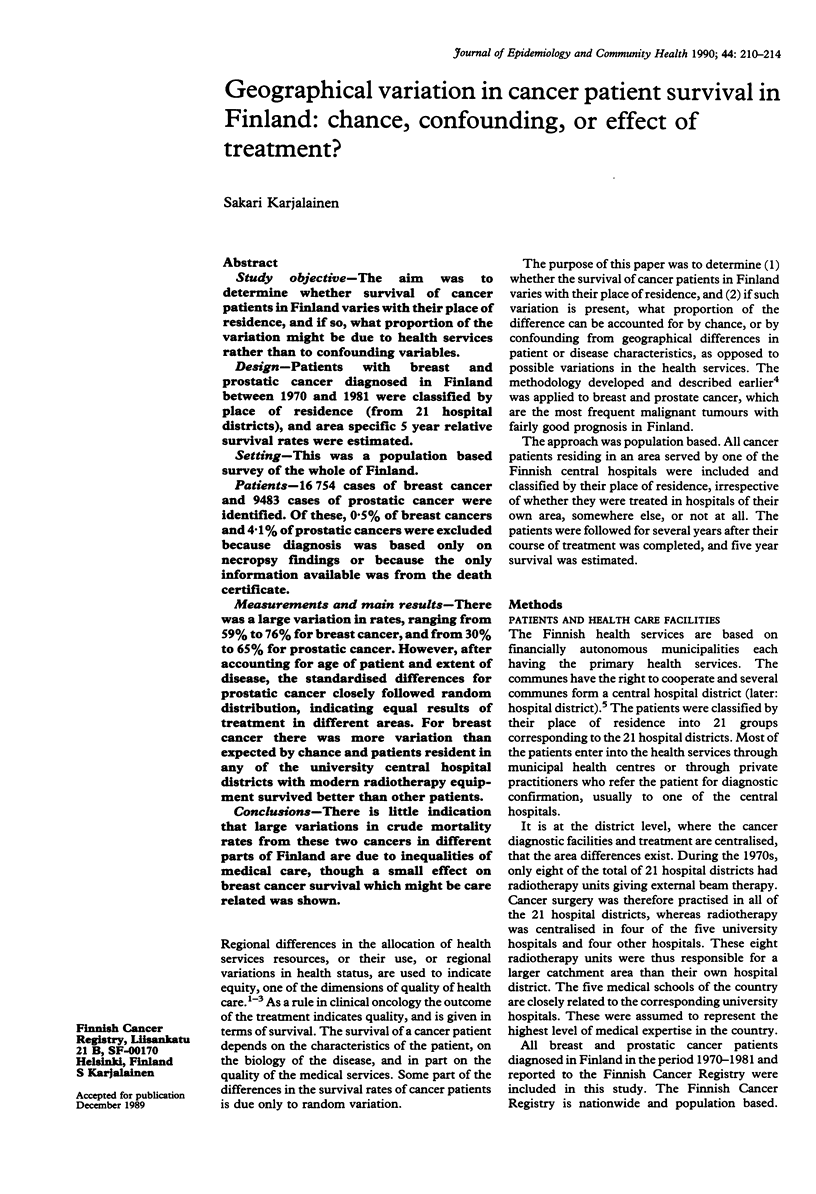
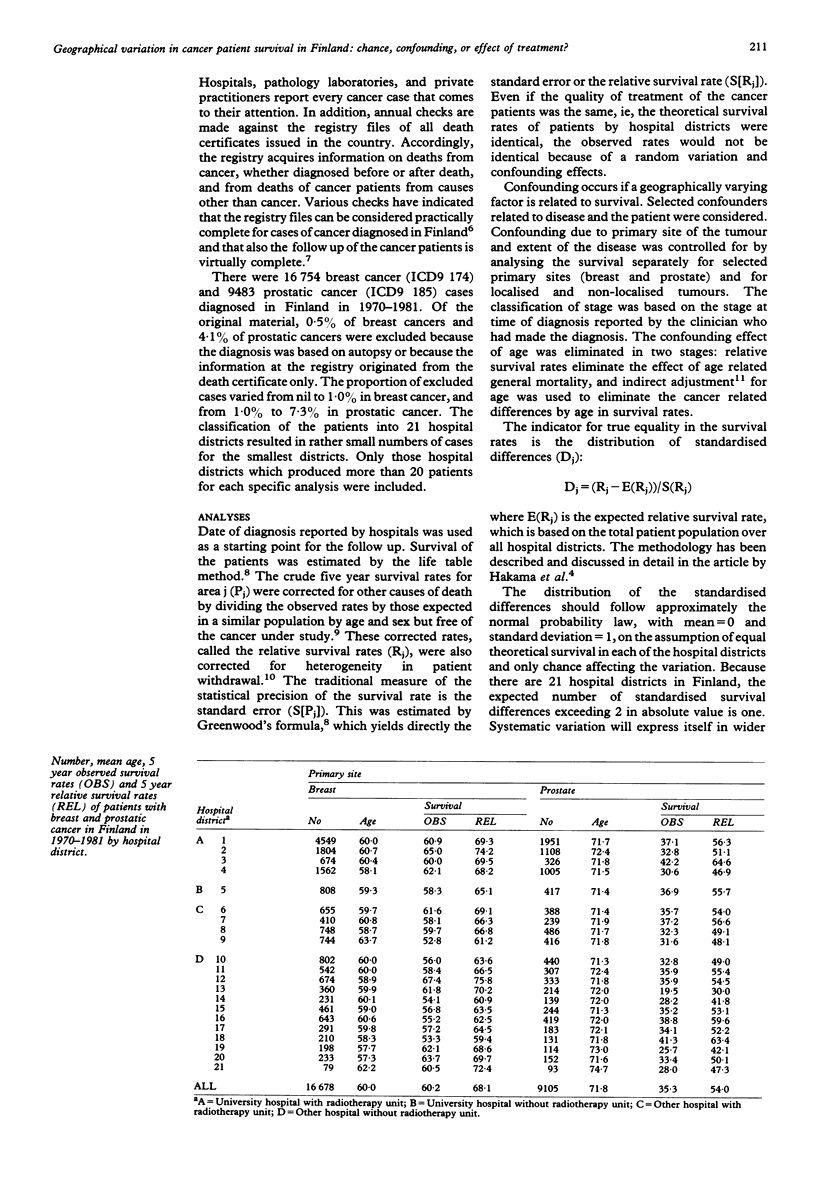
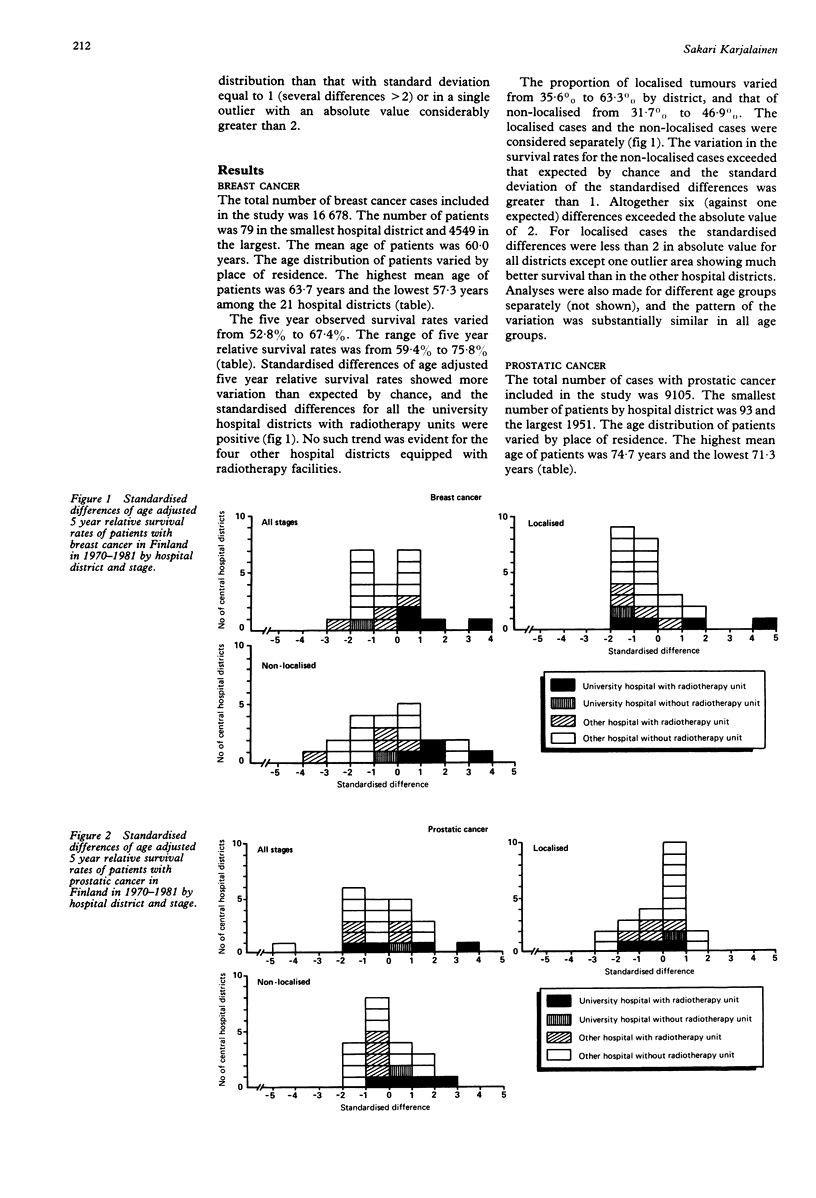
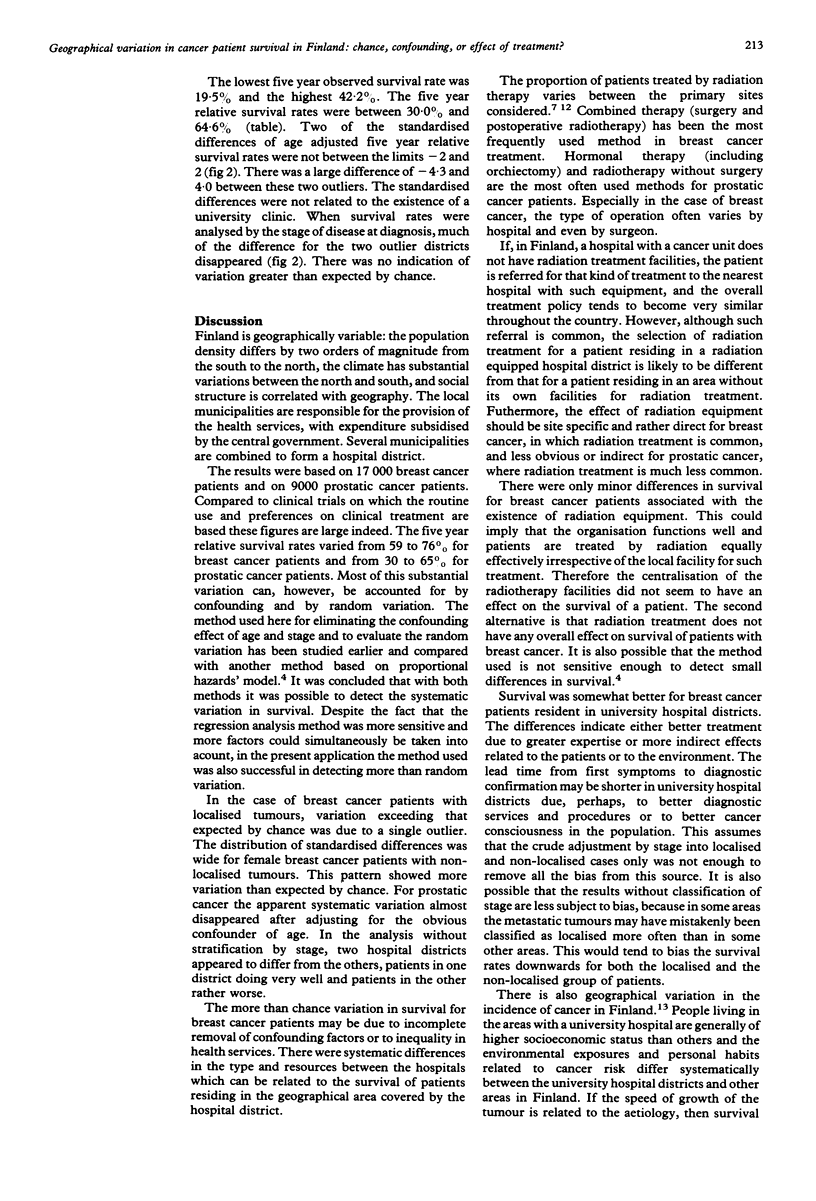
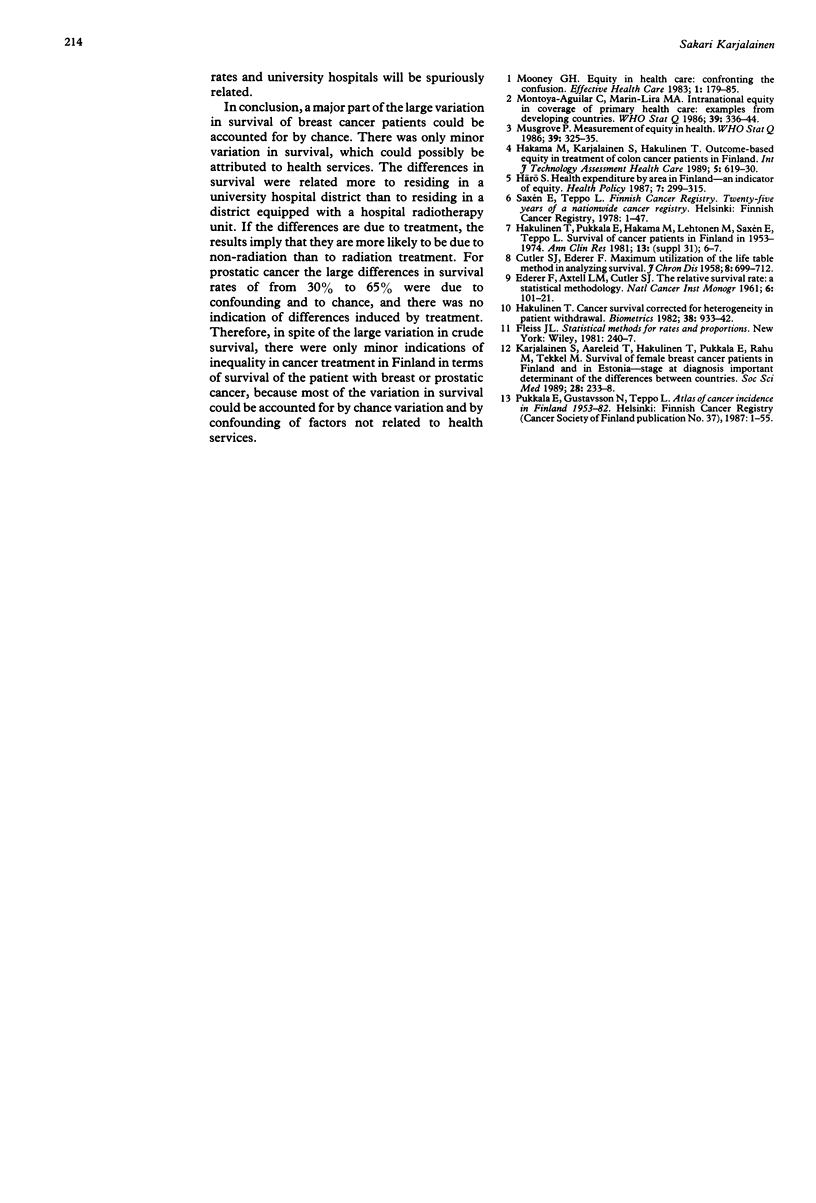
Selected References
These references are in PubMed. This may not be the complete list of references from this article.
- CUTLER S. J., EDERER F. Maximum utilization of the life table method in analyzing survival. J Chronic Dis. 1958 Dec;8(6):699–712. doi: 10.1016/0021-9681(58)90126-7. [DOI] [PubMed] [Google Scholar]
- EDERER F., AXTELL L. M., CUTLER S. J. The relative survival rate: a statistical methodology. Natl Cancer Inst Monogr. 1961 Sep;6:101–121. [PubMed] [Google Scholar]
- Hakama M., Karjalainen S., Hakulinen T. Outcome-based equity in the treatment of colon cancer patients in Finland. Int J Technol Assess Health Care. 1989;5(4):619–630. doi: 10.1017/s0266462300008497. [DOI] [PubMed] [Google Scholar]
- Hakulinen T. Cancer survival corrected for heterogeneity in patient withdrawal. Biometrics. 1982 Dec;38(4):933–942. [PubMed] [Google Scholar]
- Härö A. S. Health expenditure by area in Finland--an indicator of equity. Health Policy. 1987;8(3):299–315. doi: 10.1016/0168-8510(87)90006-6. [DOI] [PubMed] [Google Scholar]
- Karjalainen S., Aareleid T., Hakulinen T., Pukkala E., Rahu M., Tekkel M. Survival of female breast cancer patients in Finland and in Estonia: stage at diagnosis important determinant of the difference between countries. Soc Sci Med. 1989;28(3):233–238. doi: 10.1016/0277-9536(89)90266-9. [DOI] [PubMed] [Google Scholar]
- Montoya-Aguilar C., Marín-Lira M. A. Intranational equity in coverage of primary health care: examples from developing countries. World Health Stat Q. 1986;39(4):336–344. [PubMed] [Google Scholar]
- Mooney G. H. Equity in health care: confronting the confusion. Eff Health Care. 1983 Dec;1(4):179–185. [PubMed] [Google Scholar]
- Musgrove P. Measurement of equity in health. World Health Stat Q. 1986;39(4):325–335. [PubMed] [Google Scholar]


